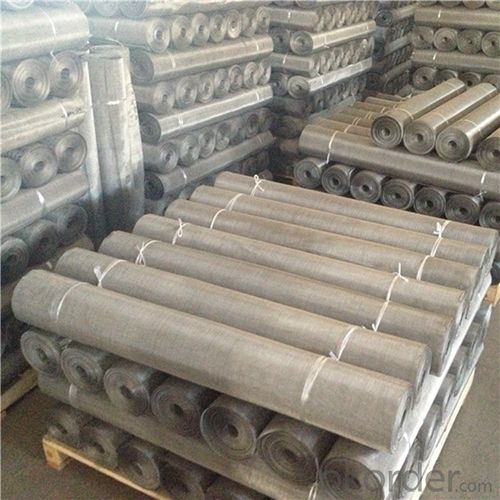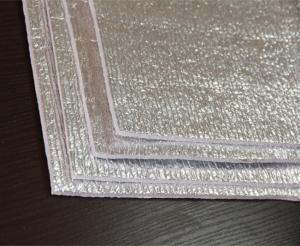Roofing Insulation Rolls Galvanized Hexagonal Wire Netting-1 1/4 inch for Chicken and Farm
- Loading Port:
- Tianjin
- Payment Terms:
- TT OR LC
- Min Order Qty:
- 10 roll
- Supply Capability:
- 3000 roll/month
OKorder Service Pledge
OKorder Financial Service
You Might Also Like
Introduction of Galvanized Hexagonal Wire Mesh for Farm and Chicken House
Galvanized Hexagonal Wire Mesh is made of by high quality galvanized wire, Low carton steel wire, stainless steel wire, iron wire, Galvanized steel wire.
Application of Galvanized Hexagonal Wire Mesh for Farm and Chicken House
Galvanized Hexagonal Wire Mesh is widely used in industrial and agricultural constructions, Rockwool, fence for poultry cage, fishing cage, playground fence and Christmas decorations
Surface treatment of Galvanized Hexagonal Wire Mesh for Farm and Chicken House
a. Black (mild steel wire)
b. Electro galvanized, (galvanized before welding, galvanized after welding)
c. Hot dip galvanized, (galvanized before welding, galvanized after welding)
d. Stainless Steel Wire
Advantage of Galvanized Hexagonal Wire Mesh for Farm and Chicken House
Our Galvanized Hexagonal Wire Mesh has strong corrosion-resisting and oxidation-resisting, stable shape, clean ends, good packing with good quality and rock bottom price.
Packing of Galvanized Hexagonal Wire Mesh for Farm and Chicken House
1. Waterproof paper then PVC shrinked
2. PVC shrinked only
3. Black waterproof paper only
4. Waterproof paper then metal/wooden pallet
5. Plastic film then carton
(Also as your request. )
Pictures of Galvanized Hexagonal Wire Mesh for Farm and Chicken House



Specification of Galvanized Hexagonal Wire Mesh
Standard Welded Wire Mesh (in 30m length, Width of 0.5m-1.8m) | ||
Mesh | Wire Gauge (BWG) | |
Inch | MM | |
1/4" x 1/4" | 6.4mm x 6.4mm | 22-24 |
3/8" x 3/8" | 10.6mm x 10.6mm | 19-22 |
1/2" x 1/2" | 12.7mm x 12.7mm | 16-23 |
5/8" x 5/8" | 16mm x 16mm | 18-21, |
3/4" x 3/4" | 19.1mm x 19.1mm | 16-21 |
1" x 1/2" | 25.4mm x 12.7mm | 16-21 |
1-1/2" x 1-1/2" | 38mm x 38mm | 14-19 |
1" x 2" | 25.4mm x 50.8mm | 14-16 |
2" x 2" | 50.8mm x 50.8mm | 12-16 |
1/4" x 1/4" | 6.4mm x 6.4mm | 12-16 |
Welded Fencing Mesh (in 30m Length, Width of 0.5m -1.8m) | ||
Mesh | Wire Gauge (BWG) | |
Inch | MM | |
2" x 3" | 50mm x 75mm | 1.65-2.5mm |
3" x 3" | 75mm x 756mm | 1.65-2.75mm |
2" x 4" | 50mm x 100mm | 2.1-2.9mm |
4" x 4" | 100mm x 100mm | 2.0mm,2.5mm |
FAQ
1. What is the storage condition?
The Galvanized Hexagonal Wire Mesh should be stored at room temperature and kept from wet and heat source.
2. How to guarantee the quality of the products?
We have established the international advanced quality management system,every link from raw material to final product we have strict quality test;We resolutely put an end to unqualified products flowing into the market. At the same time, we will provide necessary follow-up service assurance.
3. How long can we receive the product after purchase?
In the purchase of product within four working days, we will arrange the factory delivery as soon as possible. The specific time of receiving is related to the state and position of customers. Commonly 7 to 10 working days can be served.
- Q: How much insulation is required in a house roof in new York ?
- The US Dept of Energy provides online calculators to answer your question based on your zip code.
- Q: please help..
- too add to that housing insulation wouldnt help you with dampening it would make it worse by absorbing the sound, try talking through a pillow for example/
- Q: Our end unit 1940"s row house has an old leaking bitumen roof . The water entry point can not be found so a replacement seems the way to go. A roofer suggested a replacement using Firestone 180, 1/2 inch fiberboard insulation covered with fiberglass base sheet, bitumen for flashing and fibered aluminum coating on wall coping . It's all Greek to be but fiberboard insulation and flashing material ? Should I be concerned?
- We use kingspan insulation, marine grade plyboard , 3/4 inch, and yes you can use bitumen as flashing. I hope i am not being condescending, but the flashing is the bit that goes from the roof and a little way up the wall and is then "pointed" into the bricks, thus forming a water-proof barrier.
- Q: What is the aim of insulation in walls and in roofs?
- Neither, it is to not let heat through.
- Q: Hi, I have got a physics question and was just wondering about it.. Can someone pls tell me how does roof insulation work? how is it effective? How does the insulation changes the heat circulation and transfer inside a house?I know that the insulation prevents radiation from the sun and overheating.. but any more details about radiation, convection and conduction of heat pls?
- Well insulation makes a dead air space (air is stagnant). Since the air is not moving the transfer of hot and cold is slowed down considerably. But since you have to create cross ventilation to reduce rotting in wood and the build up of explosive gasses. Its a crap shoot that it even does any good. Radiation is heat so that's covered by the dead air space. Convection is usually not an issue with the cross venting. Also for conduction the insulation should slow it down considerably.
- Q: i like to put a layer of sand in roofing instead of insulation. it's fireproof and insulates better. plus it's free. how much weight can ceiling board handle? I find about 15 inches poured into the roof works fine so far. Saves me about $1600 each house built
- first sand is very heavy and will probably exceed the loading on the roof and walls the extra reinforcing you would need to make the house SAFE would far outway any savings
- Q: Have a patio with metal roof, gets very hot during summer. Will Great Stuff insulate and stick to hot roof during summer? Thanks
- Probably could, but it would look like crap. Painting the roof white would do a better job of keeping the metal cooler. I'd install a ceiling fan in the center of the roof instead to force the hot air out.
- Q: attic insulation
- Blow in insulation is so easy and cost effective, do it yourself. Machines can be rented at Lowes, HD, etc where you buy the material.
- Q: I have a vented metal roof. WV winters
- Check into heat tape tied to pipe, with insulation wrapped around that. turns on when freezing temperatures. insulation by itself, will not stop it from freezing if left for long periods without water moving through it. .
- Q: What's better- to lay out roof insulation in an old house or to get it blown in?
- Blown in. It's better and also cheaper to have the insulation blown in. It's better because the insulation will go around wires, ductwork, and pipes much easier. It can get into nooks and crannys easier. It's much quicker also.
Send your message to us
Roofing Insulation Rolls Galvanized Hexagonal Wire Netting-1 1/4 inch for Chicken and Farm
- Loading Port:
- Tianjin
- Payment Terms:
- TT OR LC
- Min Order Qty:
- 10 roll
- Supply Capability:
- 3000 roll/month
OKorder Service Pledge
OKorder Financial Service
Similar products
Hot products
Hot Searches
Related keywords



























